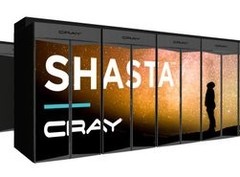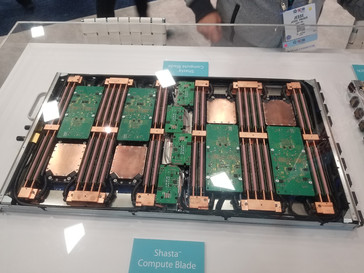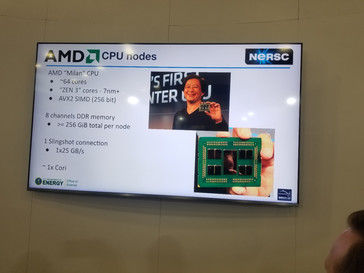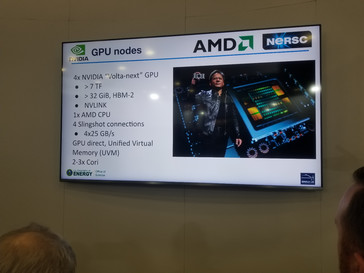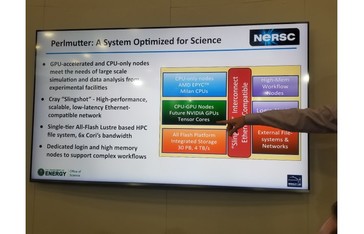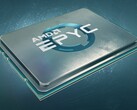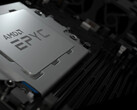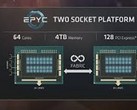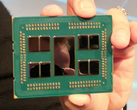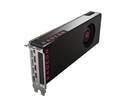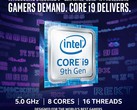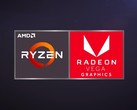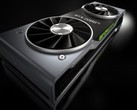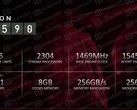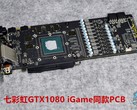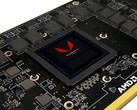AMD is a few months away from releasing the world’s first 7 nm desktop/server processors. The red team is already doing great in the desktop sector, but the server side is just beginning to see increased market share, especially with the new EPYC Rome chips that have recently been announced. Supercomputers nowadays also tend to integrate a mixture of server-grade chips and GPU clusters, and it looks like the U.S. Department of Energy has chosen AMD and Nvidia as partners for its upcoming Perlmutter project that was revealed at the Supercomputer 2018 event. What sets this exascale-class endeavor apart from everything we’ve seen so far is the plan to include the unannounced EPYC Milan 7 nm+ CPUs based on the Zen 3 architecture combined with Nvidia’s “Volta-Next” GPUs.
The future Perlmutter supercomputer will use the modular Shasta Compute platform from Cray, which allows to interconnect a series of compute blades made up of watercooled CPU nodes and GPU clusters. The CPU nodes will integrate eight EPYC Milan CPUs and 256 GB of 8-channel DDR memory that is also watercooled. Even though the slides presented by the DOE say that the EPYC Milan CPU will integrate 64 cores, it was later rectified that the 64 cores are actually from the EPYC Rome and the Milan models will most likely get more cores. As for the “Volta-Next” GPUs, not much is known besides the fact that they will obviously be faster than the current-gen V100 compute clusters.
With so much hardware under development at the moment, the Perlmutter is expected to go online some time in 2020, an this looks to be in sync with AMD’s roadmap for the Zen 3 architecture.
Loading Comments
I first stepped into the wondrous IT&C world when I was around seven years old. I was instantly fascinated by computerized graphics, whether they were from games or 3D applications like 3D Max. I'm also an avid reader of science fiction, an astrophysics aficionado, and a crypto geek. I started writing PC-related articles for Softpedia and a few blogs back in 2006. I joined the Notebookcheck team in the summer of 2017 and am currently a senior tech writer mostly covering processor, GPU, and laptop news.
> Expert Reviews and News on Laptops, Smartphones and Tech Innovations > News > News Archive > Newsarchive 2018 11 > Perlmutter supercomputer to combine AMD's EPYC Milan CPUs with Nvidia's "Volta-Next" GPUs
Bogdan Solca, 2018-11-15 (Update: 2018-11-15)




